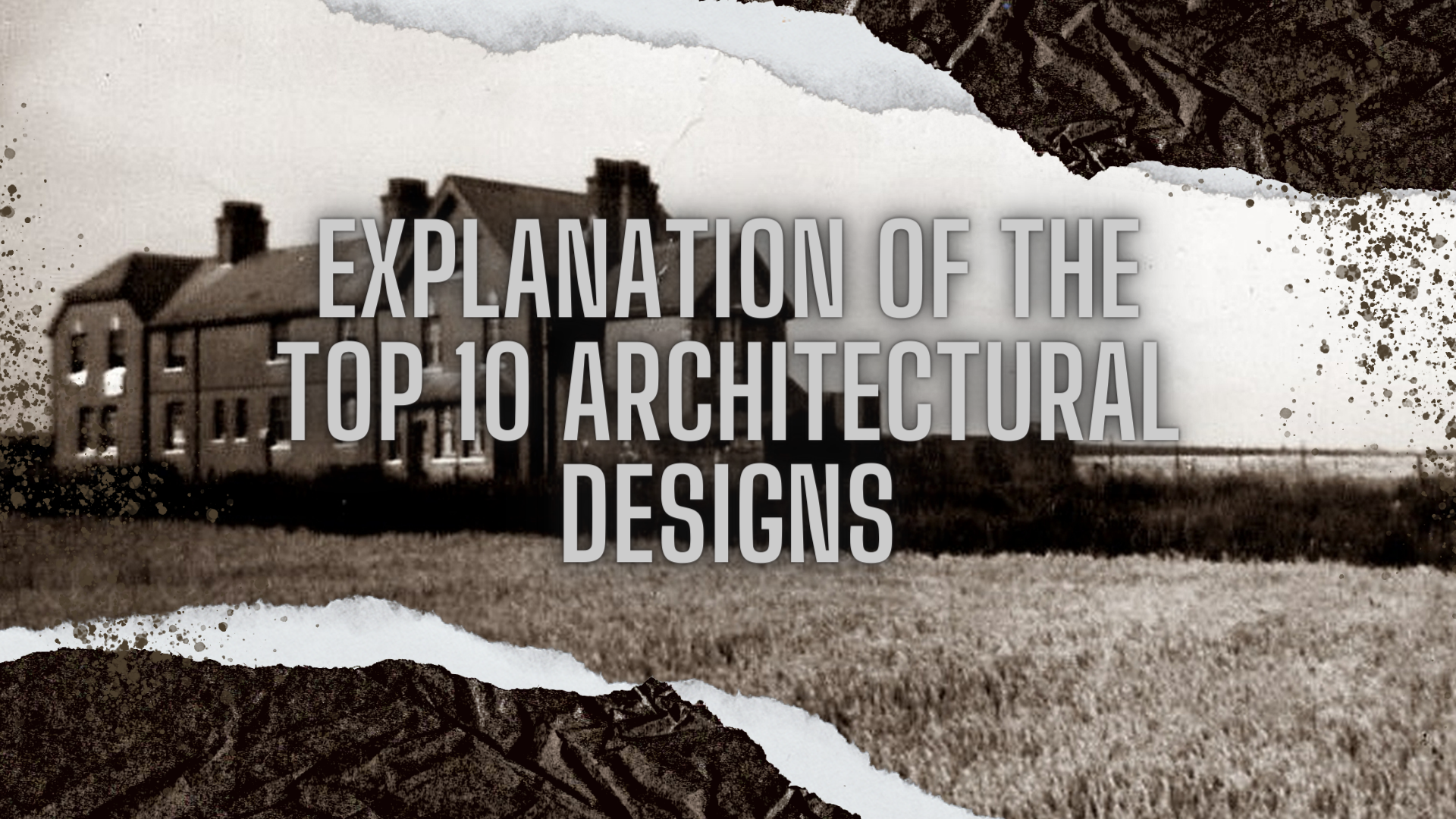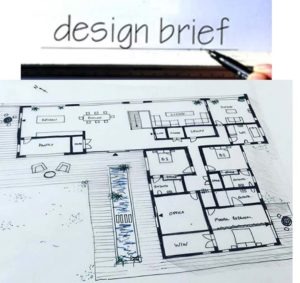Architecture can achieve many things, but what makes a great design is often the level of intrigue it provides with respect to hidden meanings and hidden components. This is typically achieved through the distinct use of material, color, and space. Here are 10 designs that were masterpieces of intentional provocation that still manage to impact society today.
Known as the “optimistic style,” modernism was inspired by ideas of utopia, invention, and a new way of thinking about how people would live, work, and connect. Even though the society in which Modernism was born has fundamentally changed, the ideology of Modernism nevertheless plays a significant role in architectural discourse today.

Constructivist Design
Constructivism is a style of art, architecture, photography, and design that emerged in the early 1920s. Rigidity geometrize, conciseness, and a monolithic look. A functional design strategy based on scientific research into the functioning of buildings and urban complexes was established by the Constructivists in 1924.
So it was born out of his contemporaries’ need for something new and a natural reaction to modernity’s floral patterns.
The crisis of modernity arrived rapidly, and by the end of the first decade, Constructivism was beginning to replace it. This new architectural and artistic style in Europe was based on pragmatic, functional shapes and peeled, colorful Art Nouveau.
The residential building is treated as a “one shape” with no adornment. From the designer’s imagined forms to the “necessary”, “genuine” or “pure” forms. Constructivism is a style of modernism with a distinct aesthetic.
Simple, rigorous, practical furniture. Each subject’s role is well-defined. Boredom is absent. When chairs, mattresses, and cabinets are merely objects to sleep on, the limit of simplicity is reached.
Constructivism in furniture gained prominence after WWI when architects’ pioneering buildings included interiors and furniture for demonstration trials. Unlike prior styles like the Baroque and Empire, Constructivism emphasized the absence of stucco. Specialty lighting is frequently used. In constructivism, furniture is mobile and useful. Interior, The Constructivism style is compact and straightforward, but not without unpredictability and aesthetic decisions.
Constructivists developed furniture and environments with maximum efficiency and minimal adornment. Colour accents: metal shine, noble black, pure white, and brilliant simple colors: red, yellow, and blue. These hues are thought to reflect the era’s philosophical and spiritual values. But this reasonable calculation failed. To highlight the essence of constructive objects, the designers made them useless from a practical standpoint.
Bauhaus design
Bauhaus house designs typically have a simple design and clear lines that set them apart from their surroundings. The flat roof and distinctive cubic form draw attention to the design of the dwellings. A Bauhaus-style home will provide you with a generous amount of living space. It will also feature many levels of living space, huge windows, and open, light-flooded rooms.
Large living space is created in the interior because of the distinctive cubic shape, which spans two or three floors. Each of the rooms can be divided from the rest of the house, or they can flow into each other. Make use of floor-to-ceiling windows to create a spacious living and dining area.
How about a bathroom with a view of a nearby forest or lake, or an immense grassland? Alternatively, a canopied terrace where you can approach right from the dining room, with a cup of coffee in your hand, right after waking up. When you wake up in your own Bauhaus home, you’ll feel like you’ve stepped back in time.
De Stijl design
In fact, architectural representations dominated the pictures in the movement’s lone journal, De Stijl, even before it was officially launched. Nevertheless, strict guidelines must be observed in order for architecture to achieve the effect of a three-dimensional De Stijl setting.
Decorative components and things must be eradicated from the space in order to purify it as much as feasible. Of course, practical items like chairs and lamps must be incorporated, but they should adhere as closely as possible to the pure aspects of De Stijl.
While a painter is allowed to use any shape they want and arrange them wherever they want, Mondrian recognised that “utility or function really impacts architectural beauty.” Certain utilitarian items may necessitate a round shape, even if the straight shape communicates the most profound beauty. A pure circle, which is far from capricious nature and closer to the strict geometric purity of De Stijl, should be used in these instances.
Expressionism design
Following World War I, Europe saw the rise of Expressionism as an early 20th-century art and architecture trend. Between 1910 and 1924, a group of European architects, including those from Germany, Austria, and Denmark, developed the style. Many of the architects had served in the military during World War I, a time of enormous instability and upheaval in Europe. What they came up with was unlike anything that had come before it because of their personal experiences.
It’s difficult to describe expressionist architecture because each construction is so unique and represents a statement by the architect. Expressionism, in fact, is often defined by what it is not. Irregularities are common in expressionist art. Expressionist architects eschewed typical box forms and refused to draw inspiration from historical precedents while designing their buildings. They had a tendency to think abstractly, to imagine things or structures that weren’t actually there.
The expressionist architecture was aimed at eliciting strong feelings and sensations in the viewer. These structures made a statement and stood out from the surrounding architecture. With materials like brick, steel, and glass, architects regularly experimented with new ways to build structures.
Functionalism design
Many people believe that painting serves a function. Whether the goal is to elicit a meditative response from viewers, to unite people of the same political persuasion, or to elicit an emotional response, art alone can define this goal. It’s a little different in terms of design. An architectural structure is defined by its function as much as its aesthetics. Nevertheless, which is more important: the way something works or how it looks? Buildings are characterized first and foremost by their purpose, and that is exactly how they should seem according to functionalist architects.
So, what would a structure designed primarily for a specific purpose look like? Aesthetically, minimalism and a focus on raw materials characterize functionalism, as does a lack of embellishment. The materials used to construct a building are frequently kept exposed and unadorned, adhering to the principle that function comes first. Flat concrete slabs, steel sheets, and even wood beams or floors are left exposed to be examined in their natural state, as they were intended to be. They exemplified modern mass production by the mid-twentieth century. Because they don’t rely on handcrafted details, functionalist buildings can use mass-produced components that are equal in function but differ only in appearance.
Minimalist design
When it comes to minimalism, most people are familiar with the idea of simplifying life down to its most basic elements. It can be used in a wide range of fields, from art and lifestyles to architecture and design.
To achieve a clean, uncluttered look, minimalist interior design follows the same principles as modern design. Simplicity, clean lines, and a monochromatic color scheme are hallmarks of this style. It is defined by an open floor plan, plenty of natural light, and utilitarian furniture that emphasizes a few key features.
Clean, clutter-free, and monochromatic minimalist environments are readily recognized. In order to clear the mind and generate a sense of visual peace, decluttering the room helps. There is a risk that some minimalist designs can feel a bit soulless. Small changes can go a long way toward making your minimalist-designed space feel more inviting. With these tips, you can bring color and warmth to your minimalist interiors in the kitchen, bedroom, or living area.
An excellent way to add warmth to a monochromatic color palette is by combining different colors and varying the texture of the materials. In the bedroom, for example, consider using linen wallpaper and soft wool fabrics and carpets to create a cozy haven. Patterns in tile patterns can offer visual interest while still maintaining a neutral color scheme, and wood furnishings can soften stark whites and cement in the bathroom.
International design
You’ve seen an international style home before, whether you recognize it or not. As spectacular as these structures appear today, their design has proven itself time and again. For the past four decades, we’ve been awestruck by the architectural wonders of the world.
Our investigation was prompted by the fact that these structures are so distinct. If you’d like to understand more about this architectural trend, as well as some of its most distinctive features, keep reading. By the end of this piece, you’ll know for sure if you’re a fan of international style.
When it comes to foreign-style homes, it’s important to focus on the commonalities that bind them together. There is nothing in the way of decoration in these homes, so the resemblance is primarily based on their shape.
Brutalist design
When it comes to design, brutalism has recently gained fresh admiration because of its graphic and angular nature, which is a perfect fit for social media’s preference for visually appealing content. They suggest more philosophically that this new respect may have arisen because of a desire for more stability in a world that is changing at an alarming rate, if not becoming chaotic altogether.
This often misunderstood form should serve as a reminder of how governments invested in civic places like public housing, libraries, and city halls that are absent today, advocates for the preservation of brutalist architecture say. In the past and present, Brutalism has remained one of the most divisive design styles in history.
In the post-World War II era, when low-cost housing and government buildings were designed primarily using raw, unprocessed materials, brutalism became popular in the 1960s and 1970s. Nations all around the world—from Europe to South America—were eager to begin the process of cultural and economic recovery following World War II. Because steel was prohibitively expensive to import at the time, construction workers turned to locally available concrete as an alternative.
Postmodernism
The term “postmodernism” refers to an architectural and decorative art movement that began in the late 1970s and continues to this day in various guises.
Modernism, the Modern Movement, and the dogmas that went along with it sparked this movement. By the 1970s, despite its democratic aims, modernism had grown to appear elite and exclusive. The alienation of housing complexes in the early 1970s was a focal point for architects and critics in the early 1970s, as was the alienation of tower blocks in east London.
Internally and externally, applied colors range from soft pastels to dazzling neon. Imaginative architecture that is both beautiful and functional. With a modern touch on classical architecture’s language. The use of unusual shapes and materials to achieve the desired effect.
Deconstructivism design
Structure and envelope conventions are distorted and dislocated by deconstructivist architecture’s surface manipulation, fragmentation, and non-rectilinear shapes. An intentional attempt is made to defy traditional notions of harmony and continuity, even stability! In a nutshell, deconstructivism is a radical departure from the norm in architectural design. a sequence of postmodernist “impulses” rather than a coherent trend or a consistent design style. You can also visit our blog on How to Prepare a Brief For Your Dream Home.
The fundamental norms of form and style should not be taken lightly. As a result, Western civilization has developed a shared aesthetic that has lasted for centuries, even millennia. Because they’re crucial. As a result, breaking the rules became a major subject in the 20th century. The avant-garde arts, those that defy established norms, exploded in popularity in the 20th century. One of the most significant moments was the postmodernism movement, defined by a rejection of the idea that art requires great theories and strict definitions. It’s possible to break the rules in a variety of ways. Those who reject the assumption that construction must have a unified shape are known as deconstructivists in architecture.




Pingback: A Complete Guide To Townhouses - Studio HmD
Pingback: Dual Occupancy The Basic Guide - Studio HmD